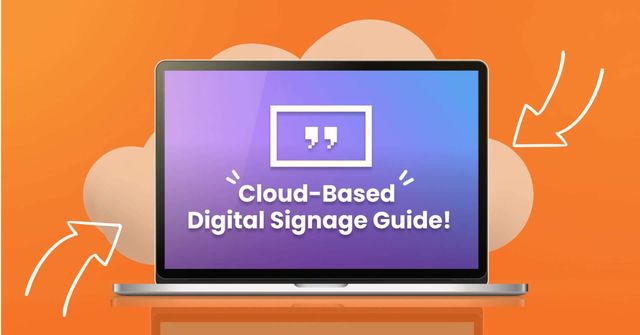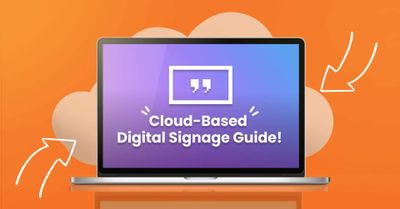Restaurant TV Menus: A Modern Dining Experience

In today’s fast-paced, digitally-driven world, the dining experience is evolving rapidly. One innovation that has become increasingly popular in restaurants is the use of TV menus. These large, often flat-screen televisions display menu items dynamically, replacing traditional static paper or board menus. Restaurant TV menus, sometimes called digital menu boards, offer numerous advantages, both for restaurateurs and diners. They present a sleek, modern way to showcase a restaurant’s offerings, streamline ordering processes, and enhance customer engagement.
This article delves into the rise of restaurant TV menus, exploring their benefits, the technology behind them, and their impact on the dining industry.
The Evolution of Menus: From Paper to Digital Displays
Historically, menus have been printed on paper or written on chalkboards, offering a simple and straightforward way for customers to view available food and drink options. However, as technology has evolved, so too have the methods restaurants use to communicate their offerings. Over the past decade, we’ve seen an increase in the use of digital displays, which allows for a more dynamic and customizable approach to presenting menu items.
What are Restaurant TV Menus?
Restaurant TV menus are digital displays that present a restaurant’s menu using flat-screen televisions or monitors. The screens are usually installed in visible areas, such as above the ordering counter or in the dining area. These screens can be connected to software that allows for real-time updates, meaning the menu can change instantly to reflect new offerings, promotions, or sold-out items.
Why TV Menus?
The growing popularity of TV menus in restaurants is due to several factors:
Visual Appeal: TV menus allow for high-quality visuals that are far more eye-catching than traditional menus. High-definition images or videos of food can be shown, making dishes appear more appetizing and enticing.
Ease of Updates: With digital displays, there’s no need to reprint menus every time there’s a change. Whether a restaurant is updating prices, adding new items, or featuring daily specials, the changes can be made instantly via software updates. This not only saves time but also reduces the costs associated with reprinting menus.
Customer Engagement: TV menus can do more than just display food options; they can also engage customers. Restaurants can display promotional videos, highlight special dishes, or feature customer testimonials. This makes the dining experience more interactive and dynamic, fostering stronger engagement with patrons.
Efficiency: Digital menus can be programmed to show different content at different times of the day. For instance, breakfast menus can be automatically displayed in the morning, followed by lunch and dinner menus later in the day. This eliminates the need for staff to manually switch out menus, streamlining operations.
Reduced Human Error: Traditional menus can sometimes include mistakes, especially if handwritten or printed hastily. With digital menus, these errors can be easily corrected and eliminated altogether. Restaurant TV menus also reduce the chances of staff miscommunicating menu details to customers.
The Technology Behind Restaurant TV Menus
At the core of restaurant TV menus is a combination of display technology and software solutions. The screens used are typically high-definition televisions or monitors, similar to those found in homes and offices. These screens are controlled by content management systems (CMS) that allow the restaurant to upload and update content remotely.
Key Components of TV Menu Systems:
Display Screens: These can range from small, individual monitors to large wall-mounted screens. The size and number of screens often depend on the size of the restaurant and the nature of the menu.
Content Management Systems (CMS): This software allows the restaurant to create, customize, and update the content displayed on the screens. A user-friendly CMS enables restaurant staff to make updates with ease, without requiring advanced technical knowledge. The CMS can be cloud-based, allowing for remote access, or it can be run on a local server.
Digital Signage Players: These are hardware devices that connect the display screens to the CMS. The player ensures that the menu content is properly displayed on the TV screens.
Networking: A reliable internet or network connection is essential for ensuring that the content on the TV menus is always up to date, especially if changes are made remotely.
Integration with POS Systems: Some advanced TV menu systems can integrate with the restaurant’s point-of-sale (POS) system. This allows for real-time updates to the menu based on inventory levels, sales, and daily specials.
Benefits for Restaurants
Restaurant TV menus offer numerous benefits for businesses, both operationally and financially.
Increased Sales: TV menus have the potential to increase sales by highlighting high-margin items or limited-time promotions. Studies have shown that customers are more likely to order items when they are visually represented with high-quality images or videos. Restaurants can also use these digital menus to upsell side dishes, desserts, and beverages.
Cost Savings: While the initial investment in digital signage software and software may be higher than traditional menus, TV menus save money in the long term. There’s no need to constantly reprint paper menus, and operational efficiency improves as a result of streamlined menu management.
Brand Consistency: Digital menus allow restaurants to maintain a consistent brand image across multiple locations. For chain restaurants, TV menus can ensure that all outlets display the same content, keeping the brand message uniform. The menus can be easily updated remotely from a central location, eliminating the need for individual store managers to handle content updates.
Improved Customer Experience: TV menus can reduce wait times and improve the overall customer experience. By presenting clear, dynamic visuals of the available options, customers can make decisions faster. Additionally, digital displays are easier to read, particularly for customers with visual impairments or those unfamiliar with certain menu items.
Real-Time Feedback and Analytics: Many TV menu systems come equipped with analytics features that allow restaurant owners to track which items are viewed the most or ordered the most. This data can provide valuable insights into customer preferences and help restaurants make more informed decisions about their offerings.
Impact on the Dining Industry
Restaurant TV menus are more than just a technological upgrade—they’re transforming the dining industry as a whole. As consumer expectations continue to evolve, restaurants that invest in digital experiences can set themselves apart from the competition.
Tech-Savvy Customers: Younger generations, particularly millennials and Gen Z, are accustomed to digital experiences in all aspects of life. Restaurants that cater to this demographic by offering visually engaging and interactive menu experiences can appeal more effectively to this tech-savvy audience.
Integration with Other Digital Tools: Many restaurants are now integrating TV menus with other digital tools, such as self-ordering kiosks, mobile ordering apps, and QR code menus. This creates a seamless, omnichannel experience where customers can interact with the restaurant’s offerings across multiple platforms.
Sustainability: As consumers become more conscious of environmental issues, paperless solutions like TV menus contribute to a restaurant’s sustainability efforts. Reducing paper waste not only appeals to eco-conscious customers but also aligns with broader industry trends toward sustainability.
Conclusion
Restaurant TV menus represent the future of dining, offering a dynamic, engaging, and cost-effective way for restaurants to present their offerings. By embracing this technology, restaurants can not only enhance the customer experience but also improve operational efficiency and drive sales. In a competitive industry where customer satisfaction is paramount, investing in TV menus can help businesses stay ahead of the curve while meeting the demands of modern diners.
As the restaurant industry continues to evolve, those that adopt new technologies such as digital menus will be well-positioned to succeed in an increasingly tech-savvy world.
Nento
Related Events


